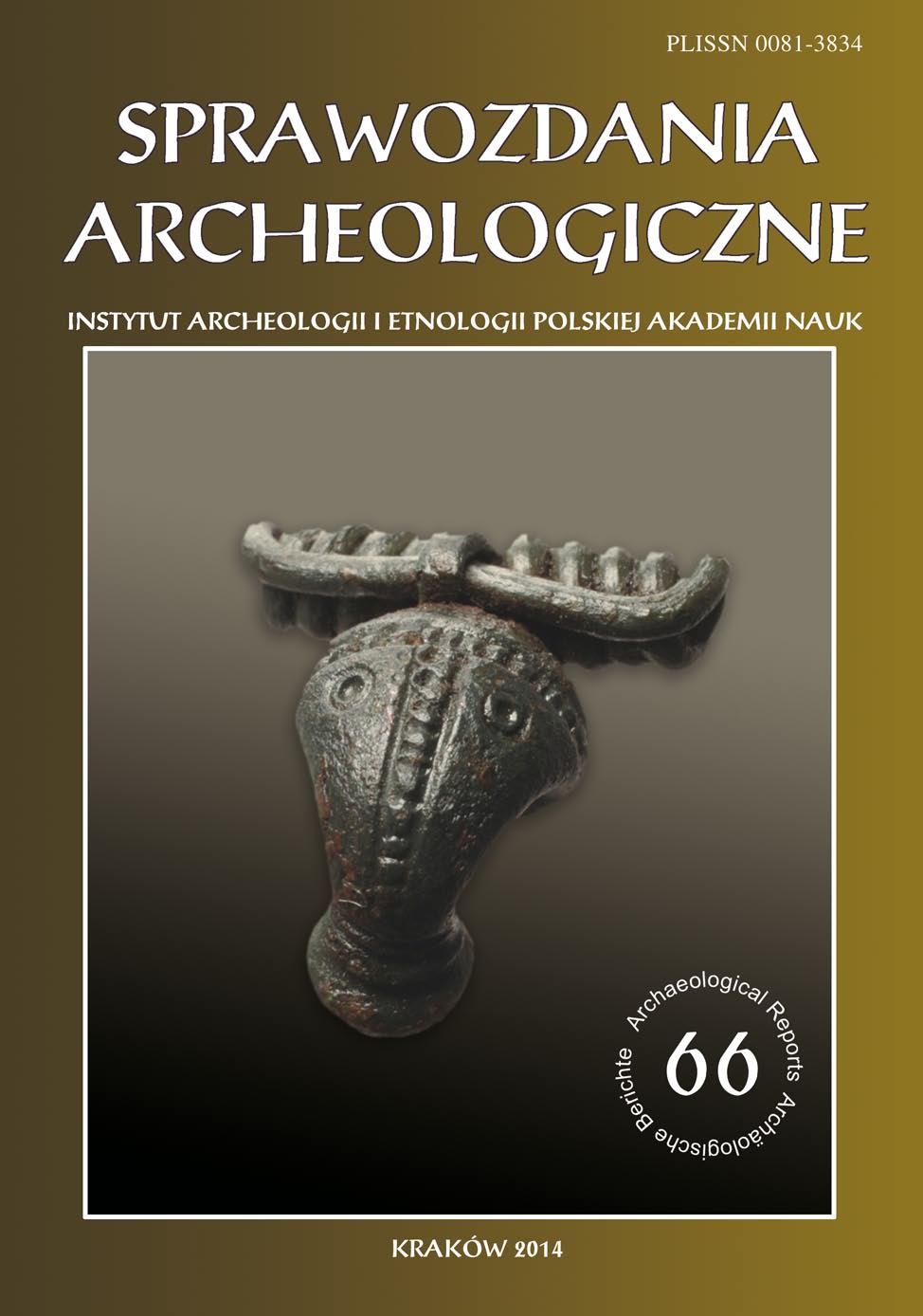Remains of the Neglected Past. Ottoman Forts on Planinica Hill, Montenegro
Keywords:
Montenegro, fortifications, watchtower, stone architecture, 3D modelling, orthophotography, Ottoman Empire, borderland studies, Balkan WarsAbstract
Planinica — a hill situated on the edge of a vast mountain range delimited to the south-east by the Zeta Plain. It is a part of historical region known as Malesija inhabited mainly by the Albanians. During the field research on Planinica in 2012–2013 a group of stone structures was documented. It consists of circular stone tower surrounded by quadrilateral wall, several small enclosures of trapezoid or pentagonal plan and a network of roads leading to the top of the hill. The arrangement of the buildings indicates that the most likely function was military. They can be described as an observatory tower surrounded by small auxiliary forts. The complex of stone structures on Planinica was most probably built by the Turks after 1878 as a part of system of fortifications guarding newly established Turkish-Montenegrin border. The border survived until the Balkan War in 1912. After that Planinica was no longer been a point of military interest and the forts on its top have undergone progressive destruction. The stone structures on Planinica are not mentioned either in archaeological or historical publications in Montenegro, except the watchtower, which is interpreted as a prehistoric burial mound destroyed by the Turks. The buildings on Planinica hill remain “in the shadow” of the prehistoric stone tumuli, which represent a positively valorised, very distant past
Downloads
References
-
Baldacci A. 2009. Nel paese del Cem. Viaggi di esplorazione nel Montenegro Orientale e sulle Alpi Albanesi. Itinerari del 1900–1901–1902, b.m.w
Baram U. 2009. Above and Beyond Ancient Mounds: The Archaeology of the Modern Period in the Middle East and Eastern Mediterranean. In T. Majewski and D. Gaimster (eds.) International Handbook of Historical Archaeology. New York, 647–662
-
Blumi I. 2003. Contesting the edges of the Ottoman Empire: Rethinking ethnic and sectarian boundaries in the Malësore, 1878–1912. International Journal of Middle East Studies 35, 237–256
-
Bineri N. 2012. ‘Negative’ Cultural Heritage: destruction or conservation? In 1st International Conference on Architecture & Urban Design Proceedings. Tirana, 535–548
Bugaj U., Trzeciecki M., Polak Z., Bogacki M. and Małkowski W. 2012. Sprawozdanie z badań terenowych w rejonie miejscowości Dinoša, obš. Tuzi, Czarnogóra. Sezon 2012. Warsaw (manuscript in the archives of the Institute of Archaeology and Ethnology, Polish Academy of Sciences)
Bugaj U., Lutovac P., Bogacki M., Trzeciecki M. and Novak M. 2013. Bronze Age Stone Tumuli on Planinica Hill, obš. Tuzi, Montenegro. Sprawozdania Archeologiczne 65, 425–431
Carlton R. and Rushworth A. 2009. The Krajina Project. Exploring the Ottoman-Hapsburg Borderland. In A. C. S. Peacock (ed.), The Frontiers of the Ottoman World. Fortifications, trade, pilgrimage and slavery. Oxford, 403–430
-
Ciepieliński A. and Woźniak R. 1994. Encyklopedia współczesnej broni palnej (od połowy XIX wieku). Warszawa
Curta F. 2005. Introduction. In F. Curta (ed.), Borders, Barriers and Ethnogenesis. Frontiers in the Late Antiquity and the Middle Ages. Turnhout, 1–9
Czekalski T., Hauziński J. and Leśny J. 2009. Historia Albanii. Warszawa
Durham M. E. 1909. High Albania. London
Galaty M. 2011. Blood of Our Ancestors: Cultural Heritage Management in the Balkans. In H. Silverman (ed.), Contested Cultural Heritage. Religion, Nationalism, Erasure and Exclusion in a Global World. New York, 109–124
-
Green S. W. and Perlman S. M. (eds.) 1985. The archaeology of frontiers and borderlands. Orlando
Jovićević A. 1923. Malesija. In J. Cvijić (ed.), Naselja poreklo stanovništva 15 (= Srpski Etnografski Sbornik 27). Beograd, 1–160
Lightfoot K. and Martinez A. 1995. Frontiers and boundaries in archaeological perspective. Annual Review of Anthropology 24, 471–492
-
Marković Č. 2006. Arheologija Crne Gore. Podgorica
Medlicott W. N. 1963. The Congress of Berlin and After. Diplomatic History of the Near Eastern Settlement 1878–1880. London
Molnàr M. 2013. Borders of the Ottoman Empire: Theoretical Questions and Solutions in Practice (1699–1856). In P. Peykovska and G. Demeter (eds.), Regions, Borders, Societies, Identities in Central and Southeast Europe 17th–21st Centuries. Sofia–Budapest, 34–44
Naum M. 2013. Re-emerging Frontiers: Postcolonial Theory and Historical Archaeology of the Borderlands. Journal of Archaeological Method and Theory 17, 101–131
-
Özen Ç., Demirag Y. and Tetik A. 2009. The Montenegrin Policy of Expansion towards Albania before the Balkan War and the 1912 Summer Campaign. Uluslararasi Ĭlişkiler 6 (22), 125–142
Power D. and Standen N. (eds.). 1999. Frontiers in question. Eurasian borderlands 700–1700. Basingstoke
Rabka R. 2010. Bałkany 1912–1913. Warszawa
Radusinović P. 1991. Stanovištvo i naselja Zetske Ravnice 1. Titograd
Radusinović P. 1991. Stanovištvo i naselja Zetske Ravnice 2. Titograd
Roberts E. 2007. Realm of the Black Mountain. A History of Montenegro. London
Said E. 1978. Orientalism. London
Todorova M. 2009. Imagining the Balkans. Oxford
Treadway J. D. 1983. The Falcon and Eagle: Montenegro and Austria-Hungary 1908–1914. West Lafayette
Downloads
Published
How to Cite
Issue
Section
License

This work is licensed under a Creative Commons Attribution-NonCommercial-NoDerivatives 4.0 International License.














